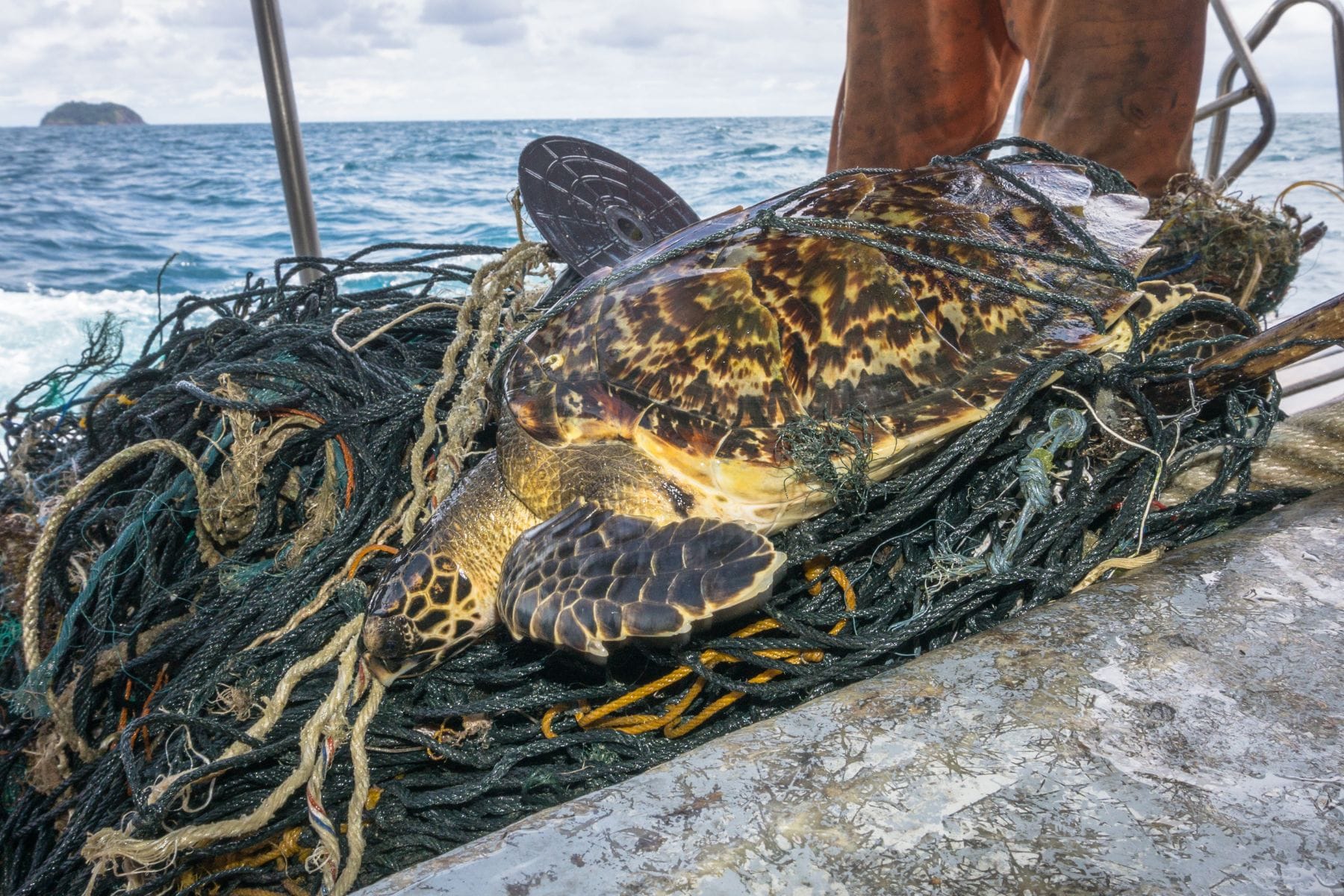Fishes are remarkable and fascinating animals who have complex behaviours and social interactions, problem-solving abilities, and even tool use in some species. There are over 34,000 known fish species, inhabiting a wide range of aquatic environments—from the deepest parts of the ocean to high mountain streams.
But sadly, fishes are often misunderstood—both in terms of their impressive capabilities, and their ability to suffer. Just like us, fishes have nervous systems and are capable of feeling pain and distress. Yet they lack legal protections to shield them from physical harm and mental torment at the hands of the fishing industry.
In Canada, fishes are exploited and mistreated in a number of industries, including commercial fishing and aquaculture, the pet trade, aquariums, and research.
It’s hard to quantify the extent of fish suffering, because of poor data—there are no clear statistics on how many fishes are used and killed in Canada. In the fishing industry, the government measures the number of fishes killed by their collective weight in tonnes. Through Animal Justice’s own analysis, we estimate over 1 billion finned fishes and 9 billion shellfishes are killed annually for food in fishing and aquaculture.
According to data gathered by The Canadian Council on Animal Care (CCAC), over 1 million fishes are used in science experiments each year in Canada. But only government-funded labs are required to report their statistics, and many private labs don’t disclose their data.
Many more fishes suffer in tanks in people’s homes and in aquariums for entertainment—often kept in barren, inadequate tanks. These fishes are bred domestically, or imported from other countries.

The Impact of Commercial Fishing & Aquaculture
Fishes killed for food are either caught in the wild, or bred in fish farms, and both are notorious for environmental harm and animal cruelty. Globally, the fishing industry kills hundreds of billions of animals every year, more than any other industry. Each animal dragged out of the water is brutally killed by being suffocated, crushed, beaten, frozen to death, or cut open alive.
The commercial fishing industry, which catches fishes in the wild, depletes fish populations in the ocean faster than they can recover, threatening biodiversity and the balance of marine life. Destructive fishing practices like bottom trawling—where large nets with heavy weights are dragged along the seafloor—devastate ocean habitats, destroying coral reefs and other vital ecosystems.
When fishes from deep waters are ripped out of the ocean in huge nets, it’s common for them to suffer an extremely painful decompression that can rupture their swim bladders, bulge their eyes, and push their stomachs out of their mouths.
It’s common for non-target animals like sea turtles, whales and dolphins, and seabirds to get caught in nets intended for other species. Some estimates state that 40 percent of all sea creatures caught in the ocean are bycatch.


Photo: Selene Magnolia | We Animals Media
Fish farming, or aquaculture, is known to keep large numbers of fishes in small indoor tanks or netted enclosures in natural bodies of water, such as lakes or bays. These conditions lead to stress, increased aggression, high mortality rates, and disease outbreaks—which can result in the widespread use of antibiotics.
Fish farms also pollute surrounding waterways through the discharge of waste products, excess nutrients, and chemicals. Pollution from fish farms can cause toxic algal blooms and degrading water quality, which can harm marine animals as well as human health.
The use of wild-caught fishes as food for farmed fishes further exacerbates the cruel and environmental concerns in commercial fishing.
Fish farming and commercial fishing are both responsible for “ghost gear“—nets and other fishing gear lost or abandoned at sea. Ghost gear kills millions of animals every year, and is one of the largest and most harmful sources of plastic pollution in the ocean.


The Need for Legal Protection for Fishes
Make no mistake—fishes feel pain. Their nervous systems have sensory receptors to detect harmful stimuli, brains to process this information, and they avoid harmful situations based on past experiences. This understanding challenges outdated perceptions of fishes. They are sentient beings who should be protected from the heartbreaking, mass suffering they face at the hands of industries.
Land animals who are slaughtered for food must generally be stunned before they are killed, in an effort to minimize the pain and distress these animals experience. But fishes are left out in the cold—there is no legislation or standards to prevent aquatic animals from suffering while they are fished, farmed, or slaughtered.
At Animal Justice, we believe all animals deserve protection from cruelty and neglect, including aquatic animals. Our mission is to overhaul the legal system to better reflect our country’s values of compassion and justice for sentient beings. Help make a difference in the lives of fishes today by leaving aquatic beings and other animals off your plate.
